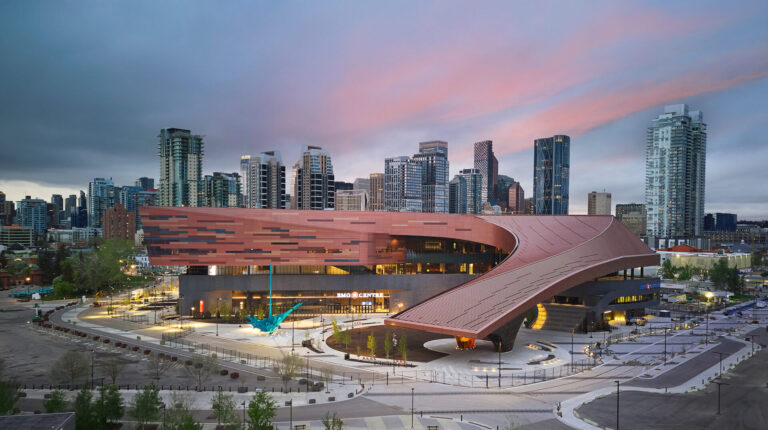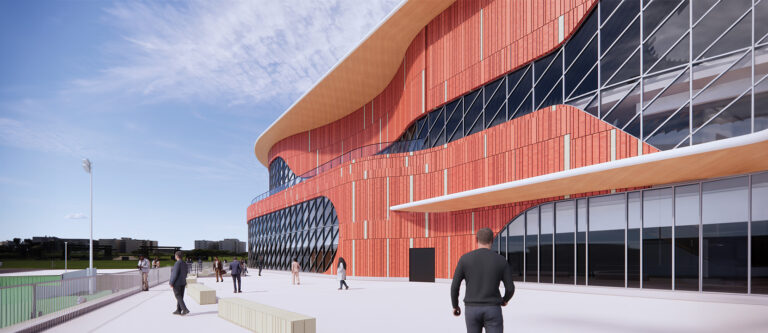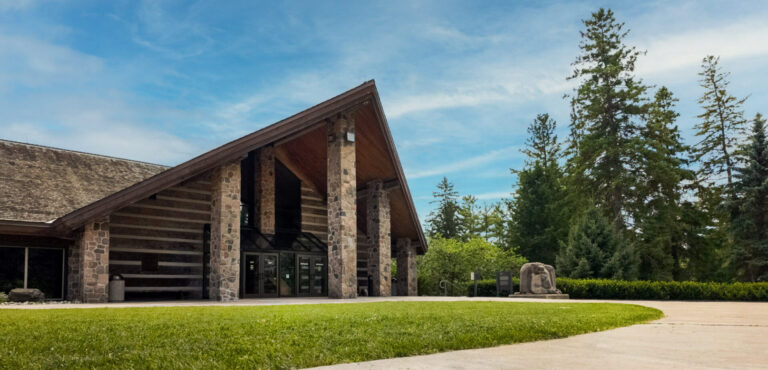The University of British Columbia officially opened the doors to the Gordon B. Shrum Building, the new home for the School of Biomedical Engineering (SBME). As Canada’s first purpose-built facility for biomedical engineering, the new building brings together researchers, students, and industry partners under one roof to advance biomedical research, education, and innovation.
The five-storey, 158,000-square-foot facility includes specialized labs, collaborative research spaces, and teaching facilities to support biomedical engineering and life-sciences innovation. Researchers will use the space to develop new medical devices, artificial intelligence-driven diagnostics, and lifesaving treatments. Meanwhile, students will gain hands-on training experience to prepare them for careers in B.C.’s rapidly growing life sciences sector.
The $139.4-million project was funded through $25 million from the Government of B.C., $114.4 million from UBC, and more than $30 million in philanthropic support for SBME from donors, including the Gordon B. Shrum Charitable Fund, the Conconi Family Foundation, United Therapeutics Corporation, Dr. Jim McEwen, and Paul and Nicole Geyer.
The building is named in honour of the philanthropic legacy of Gordon B. Shrum, who graduated from UBC in 1958. Shrum, who passed away in 2018, supported novel approaches to addressing community needs. He left nearly all of his estate to charity, leading to gifts with transformational impact on health care, the environment, education, and social justice.
“We are grateful to the Government of British Columbia and our generous donors for helping make this building a reality,” said Dr. Benoit-Antoine Bacon, UBC’s president and vice-chancellor. “B.C.’s life sciences sector has emerged as a global leader, and the Gordon B. Shrum Building will play a central role in supporting critical research and the next generation of biomedical engineers who will fuel the sector’s continued growth and bring innovative health solutions to Canadians.”
Designed by Canadian architecture firm Patkau Architects, the building provides a dedicated home for SBME, replacing its previously scattered locations across UBC’s Vancouver campus.
“This is much more than a building. This is an important milestone in medical innovation and reflects our government’s commitment to improving health care in our province. I am excited for students and the future workers of our medical technology sector to use these state-of-the-art spaces to develop and design the groundbreaking treatment therapies and life-changing medical devices that will improve health outcomes for all British Columbians,” said Anne Kang, Minister of Post-Secondary Education and Future Skills.
Complementing forward-looking architecture and collision spaces, the building’s visual centerpiece is a four-storey mural by biomedical artist Jen Ma. The artwork represents the multiscale nature of SBME’s research, illustrating how biology, medicine, and engineering intersect—from molecular to cellular to systems levels—to advance human health.
“The School of Biomedical Engineering has been transforming health care through cutting-edge research, education, and partnerships since it was established in 2017,” said SBME Director Dr. Peter Zandstra. “This state-of-the-art facility allows us to take our work to the next level—creating an environment where our faculty and partners can collaborate seamlessly and create transformative new health technologies.”
The new facility includes:
- biomechanics labs that have robots and machinery for crash-testing research to study how head, spine, and hip injuries happen. This research, led by Dr. Peter Cripton, will help develop new ways to prevent serious trauma from falls, sports, and vehicle accidents;
- the Conconi Family Biodevice Foundry, a first-of-its-kind in Western Canada, made possible by a donation from the Conconi Family Foundation, which provides tools for designing and testing medical devices. Here, Dr. Govind Kaigala and his team are developing lab-on-a-chip devices, miniature medical tools that allow researchers and doctors to detect and diagnose diseases faster;
- state-of-the-art digital labs where researchers are using the power of artificial intelligence to improve diagnostic accuracy to enhance treatment outcomes. Here, Dr. Ali Bashashati is advancing AI in medical imaging to improve cancer diagnoses, helping doctors detect diseases earlier and with a greater degree of accuracy;
- wet labs with specialized equipment and advanced microscopes provided by industry partnerships, where researchers like Dr. Nika Shakiba are working in stem-cell engineering to better understand diseases like cancer and diabetes, potentially leading to new cell-based therapies for these conditions;
- the Jim McEwen Zone for Innovators, Creators, and Entrepreneurs — supported by UBC double alum Dr. Jim McEwen — a space equipped with 3D printers, prototyping tools, and electronic testing equipment, where students and researchers can prototype and develop new medical technologies.
Featured image: (Government of BC)











